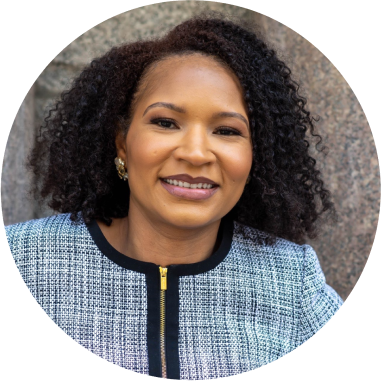Planning your exit: a business owner’s guide to successful succession
- Dr. Oyindamola Alicia Ijewere
Why planning matters
You’ve spent years building your business. Now retirement is getting closer, and you’re thinking about what happens next. If you want to pass your business to your employees, you need a solid plan.
This isn’t something you can figure out in a few months—it takes real preparation. The best time to begin planning is three to five years prior to your departure from the business. While this might seem like a long time, here’s why it’s important:
- You can increase the value and sale price of your business.
- You can teach your employees how to be effective leaders.
- You can create systems that work even when you’re not there daily.
Succession planning isn’t just about finding your replacement—it’s about ensuring your business keeps running seamlessly, in the event something unexpected happens.
Beginning early gives you and your business the best chance for success.
Making your business work without you
The biggest challenge most small business owners face is stepping back. Many businesses depend on the owner a lot. Customers know you personally. You handle the important decisions. You know where everything is and how everything works.
To fix this problem, you need to build strong systems and teach other people to handle the important jobs. This way, your business can run well even when you’re not there.
Write down everything you do
Pick a few weeks or months to document every important task in your business. Write down:
- How you find and help customers.
- Your complete sales process, from start to finish.
- Daily tasks and how to do them.
- How you manage money and budgets.
- How you work with vendors and handle contracts.
When everything is written down, other people can learn to do these jobs just as well as you do.
The five-year plan
Here’s a timeline that works for most business owners:
- Years three – five before retirement: building the foundation – This is when you start creating systems and identifying which employees might become leaders.
- Years two – three before retirement: getting ready – Now you focus on training your future leaders and making sure all your systems work properly.
- Year one before retirement: final steps – You handle the last details and make sure everyone is ready for the transition.
- Retirement year – making the change: This is when you actually hand over control to the new leaders.
Building future leaders
Creating good leaders takes time and effort. Picking just anyone can be problematic. Here are six steps to do it correctly:
Step 1: Find the right people
Seek out employees who don’t just do their jobs well; find those who show leadership skills. These employees think about and visualize the big picture, take initiative, and collaborate well with others.
You can identify them by observing how they manage challenges and how other employees react to them. Use performance reviews and ask other employees for their opinions. Sometimes the best leaders aren’t the most obvious ones.
Step 2: Give them learning opportunities
Once you’ve identified potential leaders, give them opportunities to grow. This could include:
- Training programs
- Challenging new assignments
- Opportunities to work in different parts of the business
- Leadership workshops or classes
The goal is to help them build different skills and learn how to handle various challenges.
Step 3: Set up mentoring
Pair your future leaders with experienced employees or managers who can guide them. Good mentors provide advice, honest feedback, and support when things get tough.
This one-on-one guidance helps develop leadership habits and creates a culture where people keep learning.
Step 4: Be clear about your goals
Your employees need to understand what you’re trying to achieve. If your company’s mission and values aren’t clear, it’s hard for new leaders to know what’s expected of them. Ensure everyone understands what success looks like and how they can contribute to it.
Step 5: Create a leadership culture
Don’t just focus on one or two people. Encourage leadership at every level of your company. Recognize employees who show leadership qualities, even in small ways. When you celebrate good leadership, more people will try to develop these skills.
Step 6: Measure your progress
Keep track of how well your leadership development is working. Ask for feedback from the people in your program. Test their readiness for bigger responsibilities. If something isn’t working, change your approach.
The bottom line
Building future leaders takes time, discipline, and structure. You need to choose the right people and help them develop the skills they’ll need. But when you do it right, you’ll have a business that can succeed long after you’re no longer actively engaged in it.
Remember, this process isn’t just about your retirement; it’s about creating a stronger, more valuable business. When your company can run without you, it becomes worth more money and provides better security for everyone who works there.
Start planning now, even if retirement seems far away. Your future self, your employees, and your customers will all benefit from the work you put in today.
- Jeremy Skomer decided on employee ownership when it was his time to retire. Read his ownership story.
- When it’s time to sell your business, should you sell to your employees or to an outside buyer? Check out the comparison guide.
- Ready to plan a successful exit from your business? Dive into five things you need to do to prepare for it.
Business owners should begin succession planning at least three to five years before retirement to increase business value, train leaders, and ensure a smooth transition.
Document daily tasks, create strong systems, and train employees to handle key responsibilities so your business can operate smoothly without your direct involvement.
Identify potential leaders, give them learning opportunities, set up mentoring, clarify company goals, encourage leadership at all levels, and track progress.
About the author
Alicia is a seasoned business strategy and planning professional. At Project Equity, Alicia helps business owners and employees derive value from the ownership transition process. She also conducts employee ownership research through partnerships with other institutions.

Article details
Audience
Topic


